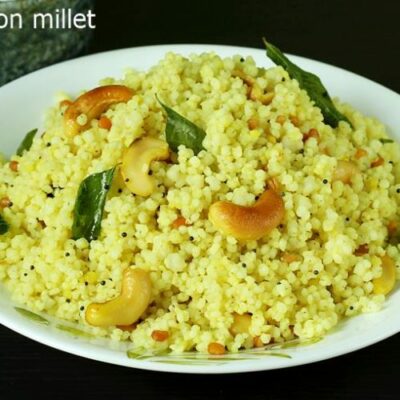Hemlata Gulia
Millets, one of the earliest food used by our forefathers, are coarse grains and a repository of protein, fibre, vitamins and minerals. They mainly include jowar (sorghum), ragi (finger millet), korra (foxtail millet), kodra (kodo millet), sama (little millet), bajra (pearl millet), chena/barr (proso millet) and sanwa (barnyard millet).
They were quite popular in past
Indians had been consuming millets as part of the daily diet since centuries being major staple food in central India, southern India and hilly regions of Uttarakhand and even in Himachal till the time of the Green Revolution. After the advent of Green revolution and emergence of high-yielding varieties of rice and wheat during the 1970s, millets got sidelined from our food basket. The reason for this seems lack of awareness about the nutritional benefits, the not-so-sumptuous taste and the tag of “a poor man’s food”. Also, government pushed only rice and wheat in the subsidized public distribution system, rendering the cultivation of millets uneconomical.
Millets need re-recognition
Excess emphasis of green revolution on wheat and rice resulted in high consumption of polished rice and refined wheat flour, which happen to be the main ingredients of foods consumed by the Indian population as on date. This trend, coupled with sedentary lifestyles, has led to a rise in obesity and other lifestyle diseases like diabetes, hypertension and heart disease, across age groups. Millets were part of our grandparents’ diet, it’s only in the past few decades that their consumption has reduced. We need to embrace the goodness of millets: Their high-fibre content helps in bowel movement and manages diabetes and obesity. Their high magnesium level is good for lowering blood pressure, while the potassium content keeps hypertension at bay. Research validates the goodness of millets.
Smart crops
In the hope of becoming fit, we start consuming whatever ‘superfood’ is trending in the West, ready to spend a bomb, and indifferent to the goodness of our own food. Not only are millets healthy, they are also farmer- and eco-friendly. Compared to rice and wheat, millets need less water and chemicals. Besides, some millets can come up in marginal land and harsh weather conditions where no other crop can grow. Bajra, for instance, comes up well in the hot weather of Rajasthan. Little millet, foxtail millet and barnyard millet are known to assure minimum yield even in case of failure of the monsoon. So as global warming becomes an increasingly real phenomenon, millets can actually be a smart way of farming and eating.
It’s about grain diversity
However, this doesn’t mean that you give up wheat and rice and start eating millets. Switching completely to millets may not be a good idea. We should not confine to eating a single grain. One need to mix it up depending on one’s health condition. If someone is diabetic, for instance, he can have more of ragi instead of rice or wheat. Also, since many urban dwellers are not used to eating millets, suddenly shifting to them is not the best idea.
Rather we can slowly introduce any kind of millet in our diet to give some adjusting time to our digestive system. Have it three-four times a week. We can have it as porridge, in roti or as whole grains in the form of rice or upma. The right cooking technique and a good recipe can lift any ingredient. It is easy to include millets in the diet as they are very versatile.
India was never a two-grain nation. Our grandparents ate all sorts of grains. We should eat everything in the right quantity, be it rice, wheat, ragi, jowar, bajra, even quinoa (if one wants to spend money)—because each one brings its share of goodness. The key to eating right lies in food diversity, not becoming a victim of a food fad.
(Writer is Science Teacher, Govt of Delhi)

